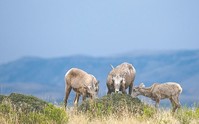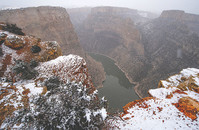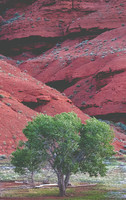Mostly Cloudy, 30° F
The current price of admission at Bighorn Canyon National Recreation Area is $5 — one of the best deals for outdoor recreation around, said Christy Fleming, chief of interpretation for the park.
But Fleming would like to see it even more …
This item is available in full to subscribers.
The Powell Tribune has expanded its online content. To continue reading, you will need to either log in to your subscriber account, or purchase a subscription.
If you are a current print subscriber, you can set up a free web account by clicking here.
If you already have a web account, but need to reset it, you can do so by clicking here.
If you would like to purchase a subscription click here.
Please log in to continue |
|




The popular national park property will either be free or see admission increase as early as summer
One of the area’s most spectacular views may soon be more, or less, affordable to visit.
The current price of admission at Bighorn Canyon National Recreation Area is $5 — one of the best deals for outdoor recreation around, said Christy Fleming, chief of interpretation for the park.
But Fleming would like to see it even more affordable: free.
A recent cost benefit analysis shows the National Park Service property actually spends about three times more on expenses and labor to collect fees than they bring in.
“Considering employee time, I.T. staffing, the cost of the kiosk, supplies and travel — all the stuff it takes to collect fees — it costs $257,000 to run the fee program,” Fleming said. “Last year, we took in $97,000.”
Park officials sent a fee adjustment request to the regional office. If it passes, it goes to Washington for approval at national park headquarters. Every national park property is separated into tiers, which determines entrance fees. The Bighorn Canyon Recreation Area — which straddles the Wyoming-Montana border northeast of Lovell — is in tier 1; that tier holds the least expensive properties to visit.
“We’re not sure where it stands right now. By summer, we may not have a fee program,” Fleming said. “However, if the Washington office denies [the proposal] and says we need to continue to collect fees, it could go up. We would have to do $15 per day.”
Former Big Horn County Commissioner Keith Grant hopes park administrators make the right decision.
“I don’t think [going from $5 to free admission] will make much difference. But if they raise the price to $15 it will,” Grant said.
His main worry is for families who come to the park for weekend recreation. The increased admission could deter some of the visitors, harming businesses in the area.
In a master plan, written in the early 1970s, the federal government promised a road connecting the northern and southern parts of the recreation area, but the 34-mile road was never built. The number of tourists — promised to be 25- to 40-percent of Yellowstone National Park by the developers of Yellowtail Dam — never materialized.
Grant spent 16 years serving as commissioner. One of his main focuses was advocating for Wyoming’s interests in regards to the recreation area and Bighorn Lake. As an active member of Friends of Bighorn Lake, Grant continues to fight to help develop the area to its full potential and protect recreational resources within the park.
“The area has never been fully developed as promised,” he said.
While Grant would like to ensure attendance doesn’t drop at the park, he also likes the open, inviting nature of the lake, trails and the ability to view wildlife without a crowd.
“We like it here. We’d like [attendance] to get a little bigger, but not like Yellowstone,” Grant said.
About 260,000 visitors enjoy the park each year, averaging 3.5 people per car, Fleming said. The park employs five permanent staff, four seasonal employees and has a handful of volunteers.
Fleming agrees that if the fee triples, local visitors — who account for the bulk of visitors at the park — may not visit as often. The two counties encompassing the bulk of the park — Big Horn County, Wyoming, and Big Horn County, Montana — have two of the lowest per capita incomes in their respective states.
“To raise the fee on our local users doesn’t seem right,” Fleming said.
She said the savings from no longer administering the fees could be used to offer other programs. The park offers several educational programs through the year to teach anthropological lessons about the humans who lived in the area for the past 11,000 years — highlighting artifacts such as tepee rings and other archaeological discoveries.
The park also has diverse wildlife, including wild horses, bighorn sheep, bears and many species of raptors. Recent sightings of wolves in the Wyoming section of the park have also sparked interest.
Popular camping and boating destinations include Horseshoe Bend and Trail Creek Campground and the boat ramp at Barry’s Landing. Devil Canyon, the third deepest canyon in the U.S. behind the Grand Canyon and the Royal Gorge, is a popular sightseeing and wildlife viewing destination. Those traveling to the recreation area often stop in Lovell for supplies, fuel and food.
Bighorn Lake, created in 1966 with the construction of Yellowtail Dam in Ft. Smith, Montana, is a productive fishery as well as a popular water sports venue. Walleye, brown and rainbow trout, yellow perch, carp, catfish, ling and crappie are among the fish commonly harvested. Trout are the sought-after prize of those fishing the Bighorn River. The river has a diverse population of fish: 38 different species of fish have reportedly been harvested from its waters.